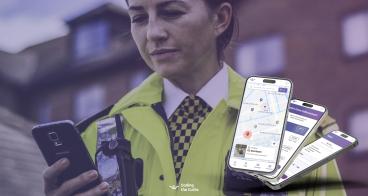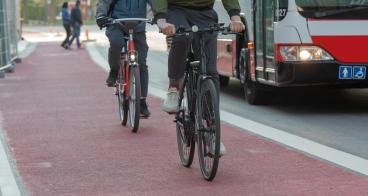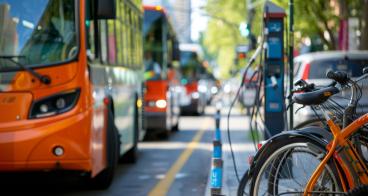The Physical Internet: A last-mile deliveries model to free cities from traffic
An open global logistics system that improves the efficiency of freight transport thanks to a reorganisation of last-mile deliveries.
In the last two decades, the growth of e-commerce has significantly affected traffic congestion in cities. Consequently, vehicle emissions have increased as well. For example, in 2019, freight transport caused 40% of the CO2 emissions from the transport sector. Urban freight transport in particular, despite only representing 3% of the total freight transport, was responsible for 20% of all freight emissions, and these numbers are likely to increase in the future (Urban Freight Logistics: An introduction to new modes of delivery, business models and policy recommendations). Another negative aspect has been the increasing costs for logistics companies due increasing number of deliveries. Indeed, the short delivery times usually requested by customers has caused the total logistics cost of parcels to increase by over 50%, as explained by Rod Franklin in his article, “Improving Last-Mile Parcel Delivery Processes– A Physical Internet approach to low emission deliveries.”
In order to mitigate this trend, the European Union has financed several projects to enable cities to explore solutions that aim to reduce the negative impacts of last-mile deliveries as well as to reduce vehicle emissions. In this context, various pilots that test emission-free commercial zones and Urban Consolidation Centres along with the use of electric vehicles and bicycles for deliveries, have been conducted in pilot cities. Despite these experiments predominantly showing positive results, their impact in a large environment still needs to be proven. In order to be able to benefit from all these initiatives, cities need to develop a systematic approach that optimises parcel delivery in the entire city. The objective is to minimise traffic congestion and emissions through a reduction of vehicles traveling with little or no cargo. This, in turn, can allow the cost reduction of the economies of scale. In other words, both consumers and logistics service providers could benefit from this scenario.
Despite the lack of implementation of models that improve self-regulating systems, one that has emerged is the so-called Physical Internet. This model manages parcel shipments in the same way that the Internet manages data.
In other words, the Physical Internet is based on a few collective rules and standardised inter-networking protocols which enable the optimisation of last-mile deliveries and the consolidation of a system-wide parcel flow. The main characteristics are:
- few constraints applied to service providers in the delivery network;
- strict interaction among the different service providers;
- sharing of resources and information among service providers.
A recent EU project (funded under the Horizon Europe programme), URBANE, aims to reduce greenhouse gas emissions from last-mile deliveries by 20%, by demonstrating the efficiency of the Physical Internet model and encouraging the development of this approach in further cities worldwide. The project, composed of 39 partners, foresees three phases. In the first phase, innovative last-mile services based on the Physical Internet will be developed and demonstrated in four cities designated as Living Labs (Bologna, Helsinki, Thessaloniki and Valladolid). The second phase will involve a comprehensive analysis and enhancement of the findings gained from the first phase in two Twinning Cities (Barcelona and Karlsruhe). Subsequently, in the third phase, the services developed and improved in the preceding phases will be tested to verify their broad applicability. This assessment will be conducted through six feasibility studies in six different cities (Prague, Antwerp, Aarhus, La Rochelle, Ravenna and Mechelen).
The URBANE framework for optimised green last mile operations report was published in May 2023. The document identifies the principles and prerequisites of a Physical Internet-inspired urban logistics operational model and establishes the strategic priorities and direction of the URBANE project. Moreover, an analysis on how cities can face the different challenges in the implementation of the Physical Internet, such as commercial and regulatory constraints, has been carried out. The report provides guidance to improve the environmental, social, and commercial aspects of last mile delivery operations through the identification of innovative approaches. For more information, click here and find the official website.
The Internet allows us to send information, like an email, to anyone anywhere. Imagine the same procedure for delivering goods or any other physical object: this is the Physical Internet.








